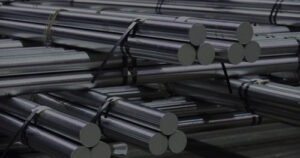High-Speed Steel vs. Cold Work Steel: A Comparative Analysis
Introduction
 Tool steels are crucial engineering materials used widely for manufacturing cutting, forming and shaping tools. Two of the most common categories are high-speed steels and cold work steels.
Tool steels are crucial engineering materials used widely for manufacturing cutting, forming and shaping tools. Two of the most common categories are high-speed steels and cold work steels.
High-speed steels (HSS) are designed to retain hardness and resist softening at the elevated temperatures encountered during metal cutting applications. Cold work steels provide high hardness and strength for tools operating at room or slightly elevated temperatures.
This article will examine high-speed and cold work tool steels in depth, comparing and contrasting their properties, performances, compositions, microstructures, processing methods and typical applications.
Overview of High-Speed Steel (HSS)
High-speed steels are alloy tool steels optimized for metal cutting applications, offering:
- Excellent hot hardness and red hardness
- Resistance to softening at elevated temperatures
- Good wear resistance and toughness
- High temperature strength and dimensional stability
Their outstanding performance results from high amounts of alloying elements, especially tungsten, molybdenum, vanadium and cobalt. These form hard carbides that ensure hardness, abrasion resistance and hot strength.
Common grades include M2, M42, T15, and specialty powder metallurgy HSS alloys. HSS allows much higher cutting speeds than carbon tool steels.
Typical applications include all types of cutting tools – drills, taps, end mills, reamers, broaches, milling cutters, saws, and more. The unique properties of HSS make it indispensable for difficult to machine materials.
Overview of Cold Work Tool Steel
Cold work tool steels provide:
- Very high hardness capability
- Excellent wear resistance
- Good toughness for shear and impact strength
- Dimensional stability in service
These properties aid in punching, forming, blanking, extruding and other cold forming operations. Common alloys are A2, D2, D3, S7 and O1.
The combination of chromium, molybdenum, vanadium and tungsten alloying imparts hardness, strength and abrasion resistance even at room temperature. Precise heat treatment develops the desired balance of hardness and toughness.
Typical cold work tooling includes blanking/piercing dies, metal stamping dies, tube/wire drawing dies, cold extrusion tooling, coining dies and more. The extreme hardness enables these tools to cut, form and shape other metals.
Key Property Differences
The differing functions of HSS and cold work steels necessitate unique property profiles:
Hardness
- HSS grades usually fall in 60-66 HRC hardness range when heat treated properly. This satisfies most cutting needs.
- Cold work steels can reach even higher hardness levels of 68 HRC or above. This allows severe cold forming operations.
Hot Hardness
- At elevated temperatures, HSS retains hardness much better than other tool steels. This is critical for cutting tools.
- Cold work steels soften at moderate temperatures. They are designed for room temp use only.
Toughness
- HSS tool steels exhibit good toughness and impact strength for their hardness level. This resists fracturing.
- Most cold work steels sacrifice some toughness for maximum hardness and shear strength.
Wear Resistance
- HSS has excellent abrasion resistance for cutting tool longevity. Complex carbides provide this.
- Cold work steels also have outstanding wear resistance for die/mold life. Vanadium carbides contribute most.
Machinability
- HSS is more difficult to grind and machine compared to cold work steels because of extreme carbide hardness.
- Additional machining is easier on cold work steels, but still more difficult than carbon steels.
Key Composition Differences
The alloying elements utilized in HSS and cold work steels also differ based on their performance requirements:
High-Speed Steels
- Large amounts of tungsten – up to 18%
- Molybdenum from 2-10%
- Chromium around 4%
- Vanadium from 1-4%
- Cobalt from 0-12%
Cold Work Steels
- Higher carbon levels – often 1 to 1.5%
- Chromium from 1.5-12%
- Molybdenum around 1%
- Vanadium from 0.1-1%
- No cobalt
Carbides Formed
- HSS has complex carbides of molybdenum, tungsten and vanadium
- Cold work steel carbides are simpler – mainly vanadium and chromium
These differing alloy contents optimize hot hardness vs. cold hardness respectively.
Differences in Heat Treatment
The heat treating procedures for HSS and cold work steels also differ:
HSS Treatment
- Austenitizing done at 2100-2300°F – higher than cold work steels
- Air cooling, salt bath or interrupted oil quench used
- Tempering at 1000-1150°F range, often double tempered
Cold Work Steel Treatment
- Lower austenitizing temperatures of 1700-2000°F
- Faster quench in oil or polymer media
- Tempering temperatures of 400-1200°F depending on hardness desired
Again, the higher alloy content of HSS necessitates more complex heat treatment to properly develop properties.
Microstructural Differences
The microstructures of HSS and cold work steels also reflect their unique compositions and functions:
HSS Microstructure
- Higher amount of undissolved, complex carbides
- Carbides remain evenly distributed after heat treat
- Less dislocation density in matrix surrounding carbides
- Coarser prior austenite grain size
Cold Work Steel Microstructure
- Less carbide volume fraction
- Carbides tend to coalesce during austenitizing
- Higher dislocation density in quenched martensitic matrix
- Finer prior austenite grain size
These differing microstructural features align with their individual performances.
Differences in Manufacturing Methods
HSS and cold work steels utilize some distinct manufacturing techniques:
High-Speed Steel Production
- Most commercial grades made via ingot or ESR melt processes
- Higher degree of attention to cleanliness and homogenization
- Extensive forging or rolling to refine carbides
- Powder metallurgy HSS also now common
Cold Work Steel Production
- Readily produced through electric arc furnace processes
- More attention to sulfur and phosphorus impurity control
- Mainly cast into ingots, blooms or billets
- Less secondary processing beyond casting
Again, the higher performance requirements of HSS necessitate more complex melting and hot working approaches.
Difference in Cost
The sophisticated alloying and processing of HSS makes it substantially more expensive than cold work varieties:
- High-speed steels average $6-8 per pound
- Cold work tool steels average $2-4 per pound
- Powder metallurgy HSS can reach $15-25 per pound
This significant cost difference leads many shops to utilize cold work steels when possible. HSS is reserved for the most demanding applications.
Differences in Machinability
The machinability of the two types of tool steel also differs:
High-Speed Steel Machining
- Very low machinability relative to cold work steels
- Slow feeds and speeds needed
- Carbide tooling generally required
- Grinding wheel wear is high
- EDM process readily utilized
Cold Work Steel Machining
- Somewhat better machinability than HSS
- Faster feeds/speeds can be used
- Carbide tooling still needed for hardened state
- Less grinding wheel wear
- EDM required for highest hardness levels
The high content of extremely hard carbides makes machining HSSs more challenging than the cold work varieties.
Typical Applications

The unique properties of HSS and cold work steels make them suitable for distinct applications:
High-Speed Steel Uses
- Cutting tools – drills, end mills, taps, reamers, saw blades
- Broaches, gear cutters, slotting cutters
- Lathe, milling, and planer tooling
- Circular cut-off blades and slitters
- Knives, razors, surgical tools
Cold Work Steel Uses
- Blanking, piercing and forming dies
- Coining and embossing dies, swaging dies
- Extrusion tooling, wire/tube drawing dies
- Cold heading and cold extrusion tooling
- Flat shear and slitter blades
- Cold chisels, punches
Cost-Benefit Analysis
Despite higher costs, HSS delivers substantial benefits for cutting applications:
- Allows much faster cutting speeds and feeds
- Provides dramatically extended tool life
- Reduces machine downtime for tool changes
- Lowers cutting fluid requirements and usage
- Enables machining of difficult to cut alloys
- Improves surface finish and precision
For optimal metal removal productivity in machining applications, HSS is the clear choice despite the increased price tag.
Summary and Key Takeaways
In summary, the key differences between high-speed and cold work tool steels are:
- HSS offers hot hardness while cold work is designed for room temperature use
- HSS has higher alloy content, especially tungsten, molybdenum and cobalt
- HSS is heat treated at higher temperatures and double tempered
- HSS has outstanding red hardness but is more difficult to grind
- Cold work steels achieve maximum hardness levels but have lower toughness
- Cold work steels are significantly less expensive than high-speed varieties
Understanding these distinctions allows selection of the proper grade for an application’s specific requirements. Both play indispensable roles across manufacturing.
Frequently Asked Questions
Q: What is red hardness and why is it important in HSS?
Red hardness refers to a steel’s ability to retain hardness and strength at temperatures up to 1000°F or higher. This is critical for cutting tool performance and life. The high alloy content of HSS provides excellent red hardness.
Q: What makes cold work tool steel so capable of extreme hardness?
The high carbon content along with significant chromium and vanadium additions in cold work steels enable the development of very hard martensite upon proper heat treatment. This gives the shear strength needed for severe cold forming operations.
Q: Which tool steel type has better corrosion resistance?
Cold work steels generally have better corrosion resistance than HSS. Their higher chromium content provides more passivation and protection. HSS relies primarily on carbides for wear resistance rather than corrosion protection.
Q: What industries utilize HSS and cold work steels the most?
HSS is very heavily used in aerospace, automotive, oil and gas, power generation, and other metalworking industries. Cold work steels see extensive use in automotive, appliances, electronics, and consumer products manufacturing.
Q: Why is powder metallurgy HSS so much more expensive than conventional HSS?
The complex production methods and fine microstructural control possible with powder metallurgy allow extremely uniform carbide sizes and distributions in HSS. This significantly improves cutting performance to justify the higher cost.
I hope this detailed comparison provides helpful knowledge on properly selecting and applying these two essential varieties of tool steel! Please let me know if you have any other questions.

